
While I was visiting my family over the 4th of July weekend, I saw a box for a board game I hadn’t thought about in a long time: “Talisman: The Magical Quest Board Game.” My brother had purchased it a few years ago to recapture the magic of our childhood, and apparently my niblings enjoyed playing it enough that it was left sitting out.
Talisman is a relatively straightforward game in which you roll a six-sided die to move around a board and land on spaces, similar to Monopoly. However, on many of these spaces you have random encounters, as determined by the top card of the Adventure deck. Sometimes you find a bag of gold, sometimes an enchanted object. Other times you have an encounter, like a monster you have to fight, a princess who becomes your follower and can be returned to the Castle for gold, or a pestilence which sweeps across the land.
The board is separated into three zones: an Outer, a Middle, and an Inner Region. If you can make it to the Inner Region, you must possess a magical Talisman to enter the Valley of Fire, and then claim the Crown of Command, which lets you smite all other players from afar. Speaking of smiting, there’s also PvP in the game, and if you win a battle over an opponent, you can choose to take one of their four life points, a gold piece, or an object they are carrying.
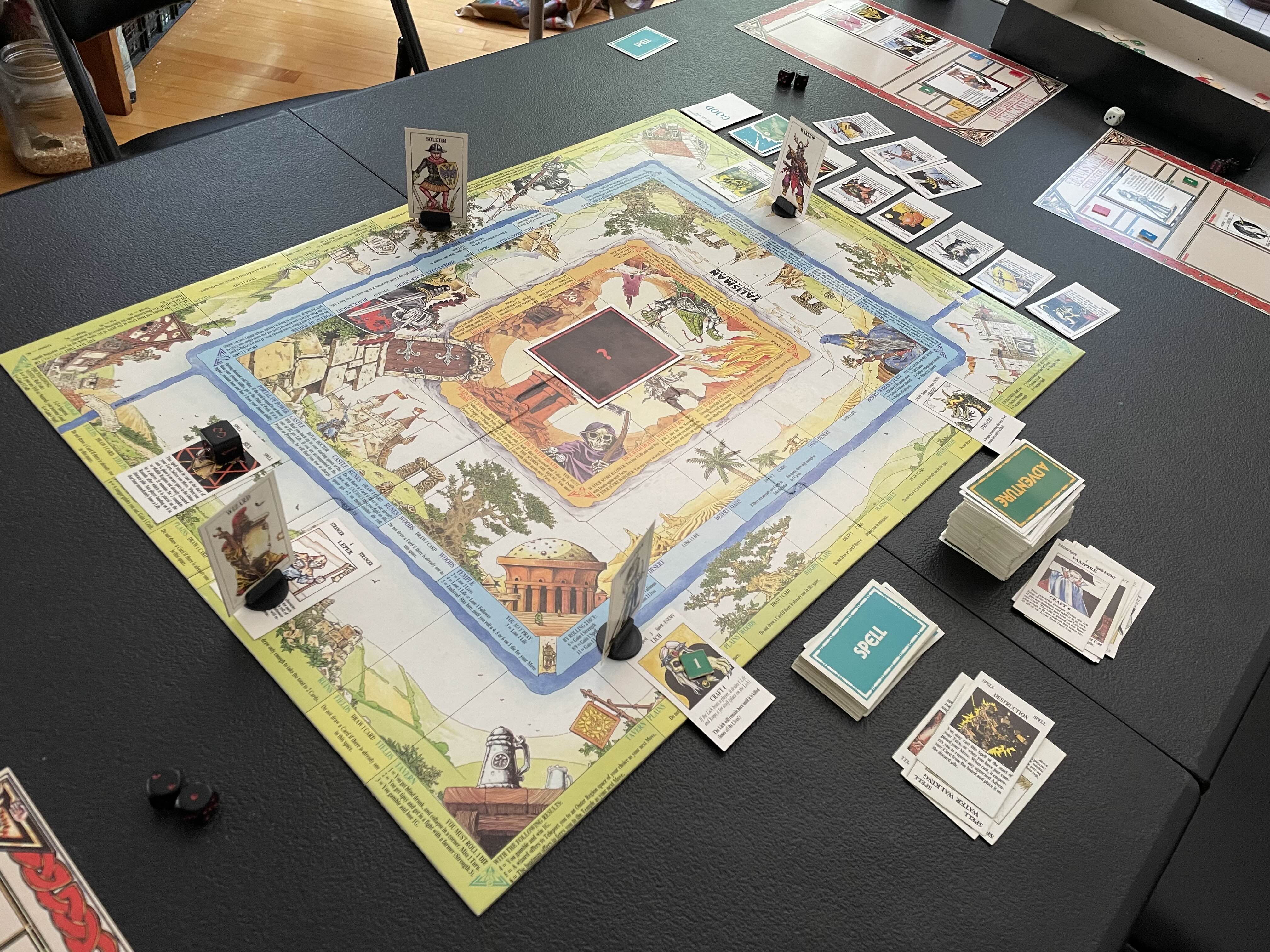
What makes Talisman less random than something like Monopoly is that the character you play isn’t just a superficial signifier; it determines your stats (Strength and Craft), as well as unique special abilities. So your character drastically impacts how you might approach the game. For example, a Thief would probably choose to steal other players’ best items while avoiding combat, but a Troll, who has the highest starting Strength in the game, would just bludgeon everyone and everything in its path.
As a child, I found these characters and the other cards that came with the game incredibly evocative. I spent much more time staring at the art than actually playing the game, since no one in my family could stomach the never-ending gaming sessions like I could. In fact, I don’t think I ever finished a game as a kid.
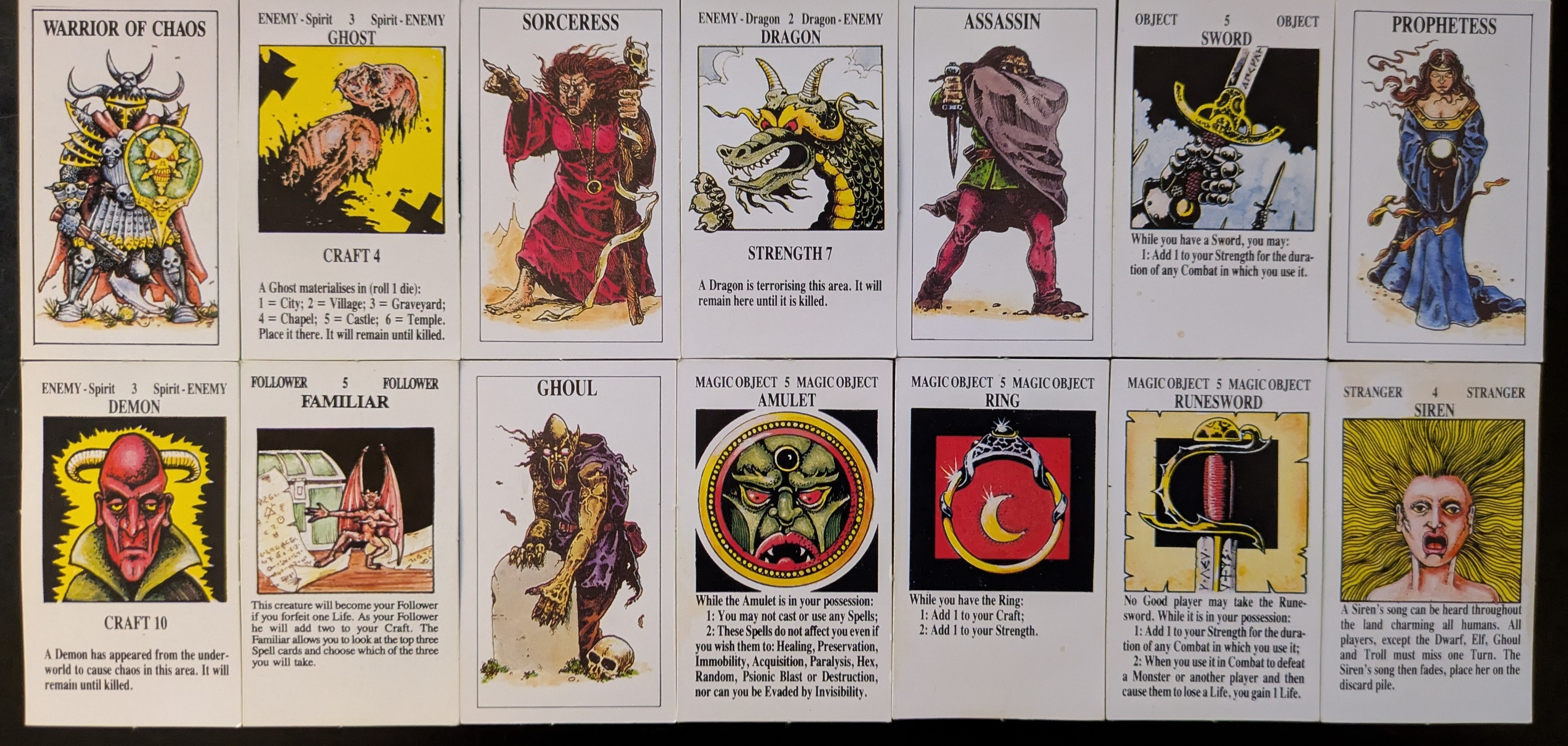
When I asked my brother about his family’s playing habits, he bemoaned the same thing he had 30 years ago: that the game took too long and they had tried but never played to the end. I convinced him to play a quick game with his family by having a custom win condition that drastically shortened the length of it: First to the Middle Region wins.
Something I noticed while playing was that even though this 4th edition we were playing was basically the same ruleset as the 2nd edition I grew up with (and was, admittedly, improved in a few ways), the modernized art had stripped away much of the aesthetic that had attracted me to the game in the first place. After a little research, I realized the art problem was even worse with the recently-released 5th edition.
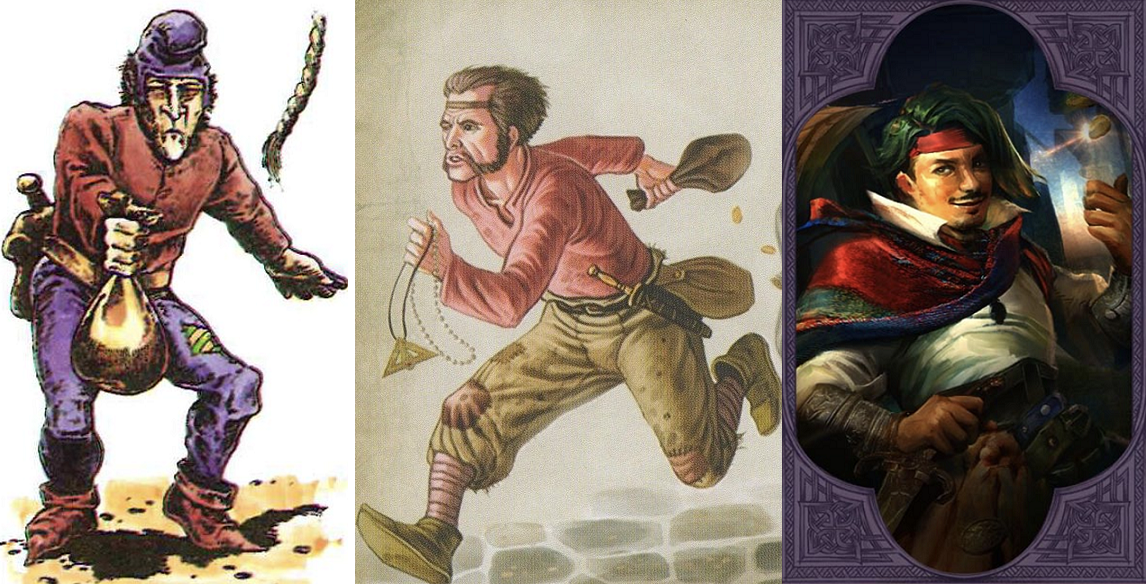
Returning home and still feeling the itch from the short session with my family (I didn’t win), I found and purchased an old copy of the 2nd edition, first published in 1985. The game was marked “untested/as-is,” but was astoundingly complete, including every card and counter from the base game, plus two expansions.
After having pored over every card art, I asked a few Lords if they wanted to play this “Old School Renaissance”-adjacent board game. I found a quorum and set a date.
As the date drew near, I began digging through old forums on Talisman Island and similar websites, in order to get a sense of how the 2nd edition stacked up to the newer versions. The common complaints were that the game lasted forever; there were no rerolls; and getting turned into a toad, a core mechanic of the game, was incredibly punishing.
On game day, I explained the original rules and offered some updated ones based on the 5th edition, but the Lords were having none of it. They wanted to play with most of the original rules. The only rules we modified would end the game faster: characters leveled up more easily from trophies of defeated monsters; and if your character were slain, you could only make a new character in the first two hours. Thus, the game could end through traditional means of reaching the Crown of Command, one-on-one PvP, or simple attrition.
Including the two expansions, there were 36 characters to choose from. I figured a good way to give players some choice without overwhelming them was to give each player five character cards and let them choose one. Lords Moss and Houtman quickly settled on their choices: the Wizard and the Warrior, both of which are strong characters. Lord Zinni asked me who I would pick between the Soldier and Hobgoblin, and I suggested the Soldier, who has excellent beginning stats: 4 strength (5 including the sword) and 3 craft.
I was not thrilled about my options, but I narrowed it down to two: the Monk and the Philosopher. In retrospect, I think the Monk would have been a very good choice, especially for PvP, but I decided I liked the Philosopher’s playstyle: peek at the top card of the Adventure deck and decide whether to land on a space with a card draw, using the move reroll ability where necessary.
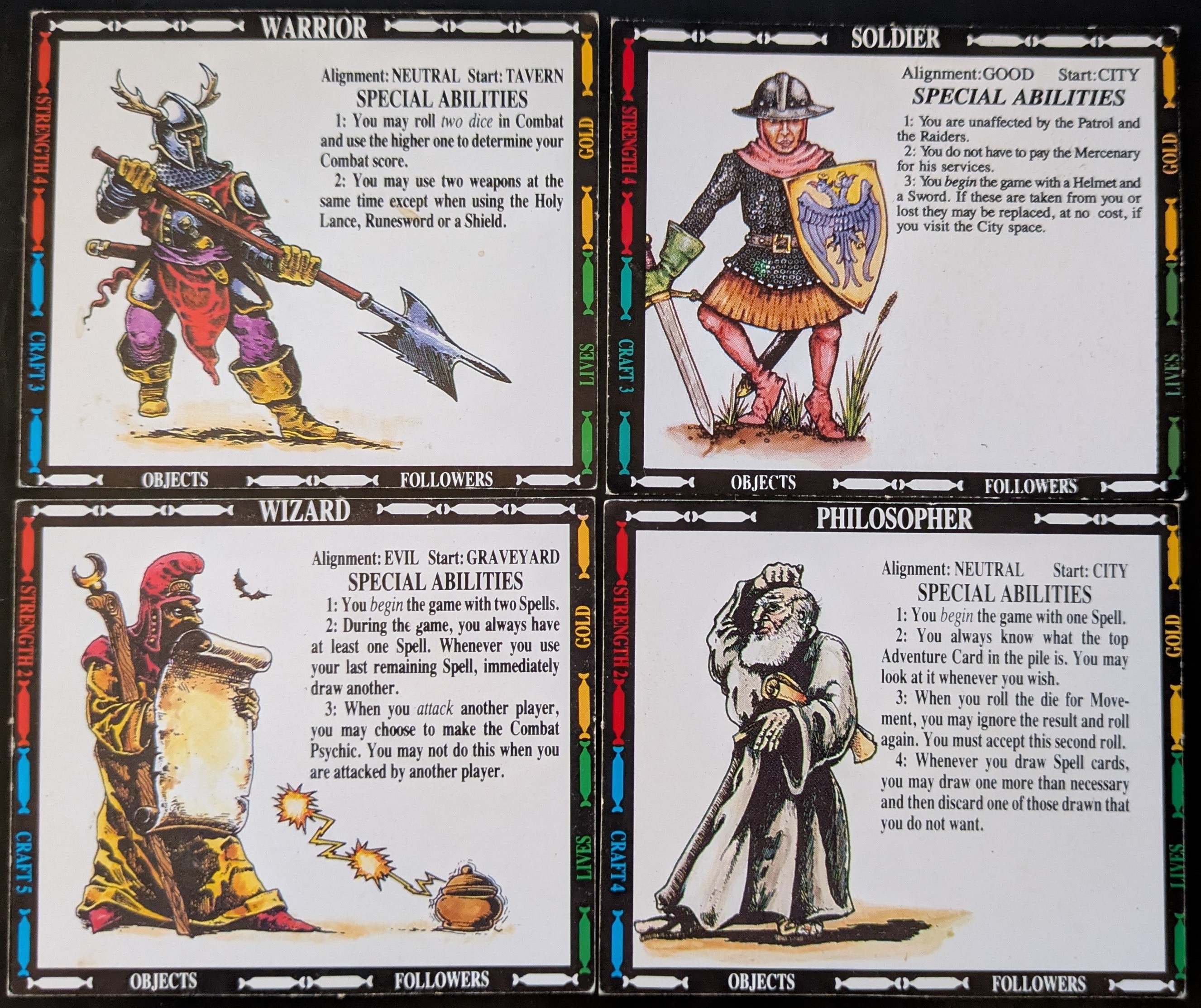
My strategy worked well for PvE encounters. In the early turns of the game, I avoided a number of nasty encounters, like a dragon, a ghast, and a leper. Moss, whose turn it was after mine, complained about his bad luck for much of the game; he didn’t seem to notice when I would peek at the top of the deck and then scramble not to draw a card.
At just 2 Strength, I was weak to PvP, and Zinni took advantage of that fact by bullying me out of my starting gold piece and a Talisman I drew.
Zinni had a strong start, drawing the Wand, one of the best items in the game. Both he and Moss now had the ability to always draw a new spell card when they ran out, and they both immediately grasped the utility of churning through spells as frequently as possible.
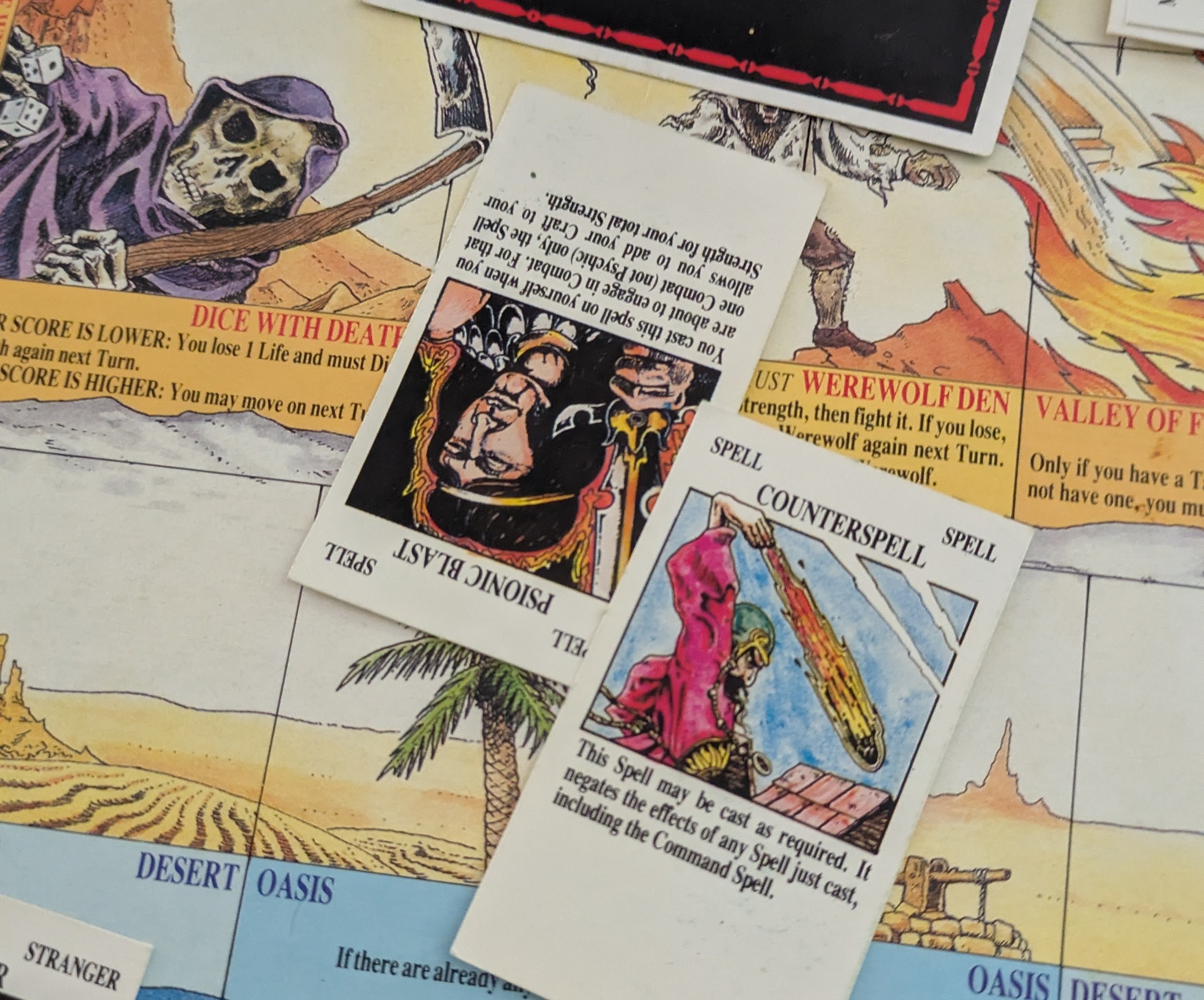
A turning point in the game came when Moss, having drawn the Warhorse, attacked Zinni, with fairly good odds of winning, especially after he Counterspelled Zinni’s Psionic Blast. But the dice were against him, and Zinni won, taking the Warhorse. That put Zinni far ahead, and once he picked up the Familiar, adding 2 to his Craft, it seemed no one could really touch him.
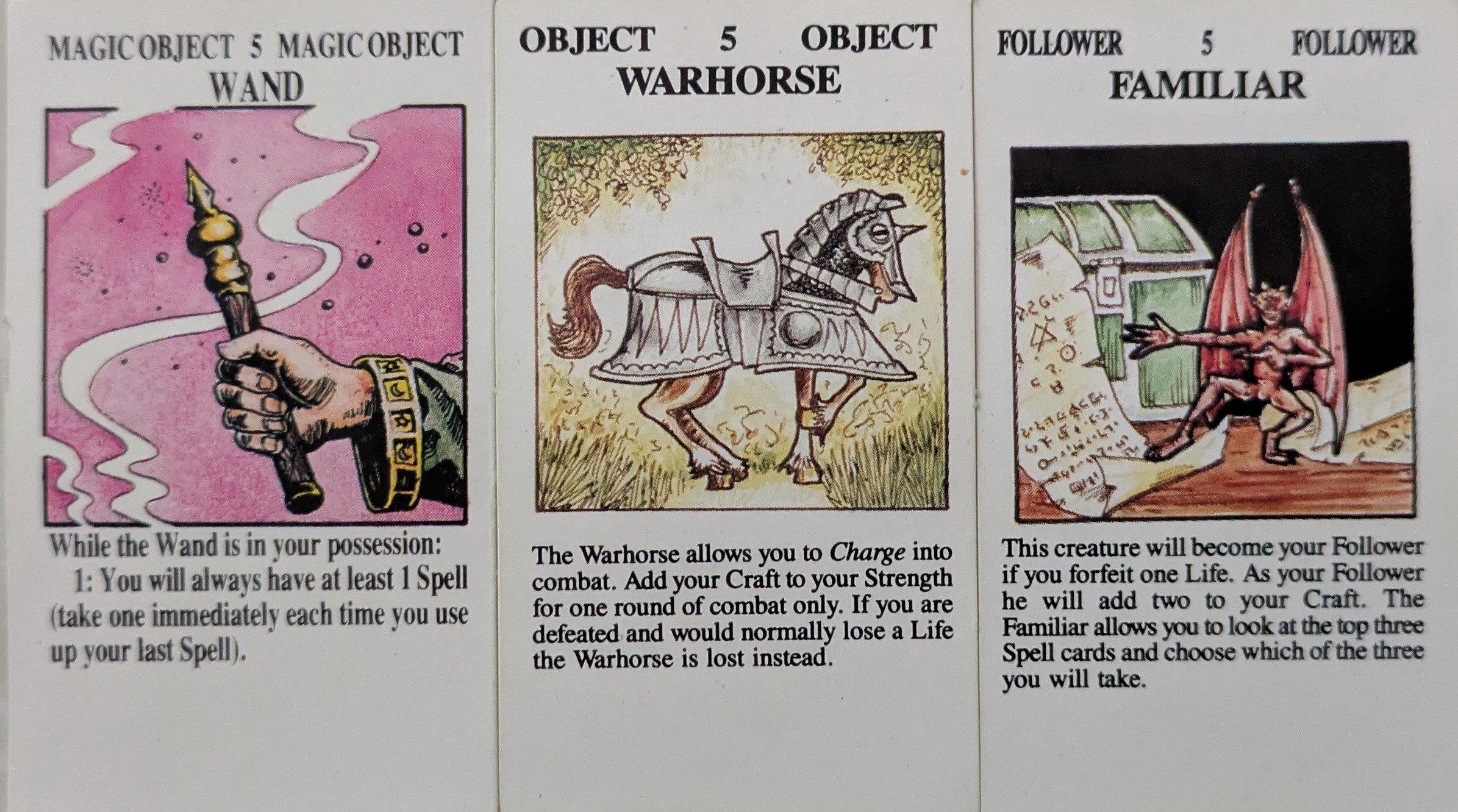
Meanwhile, Houtman, who should have been crushing monsters and leveling up with the Warrior, was on the wrong side of luck, and lost easy encounters left and right.
Moss, on tilt at that point and with only one life point left, bravely charged into battle against an enemy with higher strength than him, and the Wizard was slain. With fifteen minutes still on the clock for reincarnation, Moss chose to play the Priest, but seemed to have not read the character card, as he complained about his choice for most of the rest of the game.
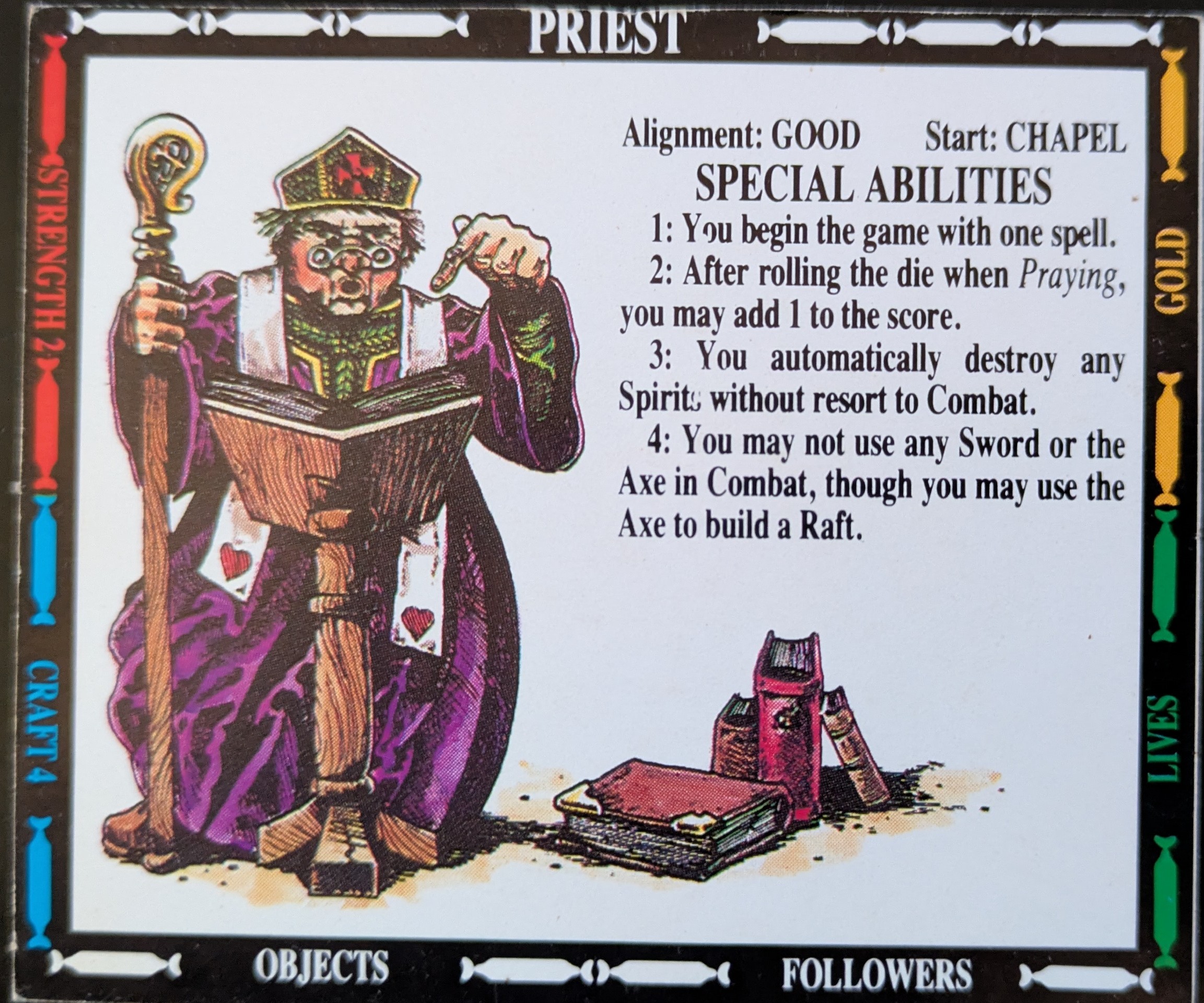
Soon after the clock ran out, Moss, still on tilt, had his Priest fight Houtman’s Warrior, not once but twice. Houtman’s luck was so bad, the first time their fight ended in a draw, and the second time the lowly Priest managed to slay the mighty Warrior. Houtman was out.
With Houtman dead and Zinni greedily eyeing my Horse and Cart, I decided to buy an Axe and head for the Woods to make a Raft and set sail to the Middle Region. My Philosopher had gained quite the following–the Guide, the Maiden, and the Unicorn. With an effective 4 Strength and 8 Craft, I thought I might be able to make a run for the Crown of Command, especially since I had picked up another Talisman. I was a little hasty and probably overestimated the likelihood of being slain by a player, but I also wanted to wrap the game up.
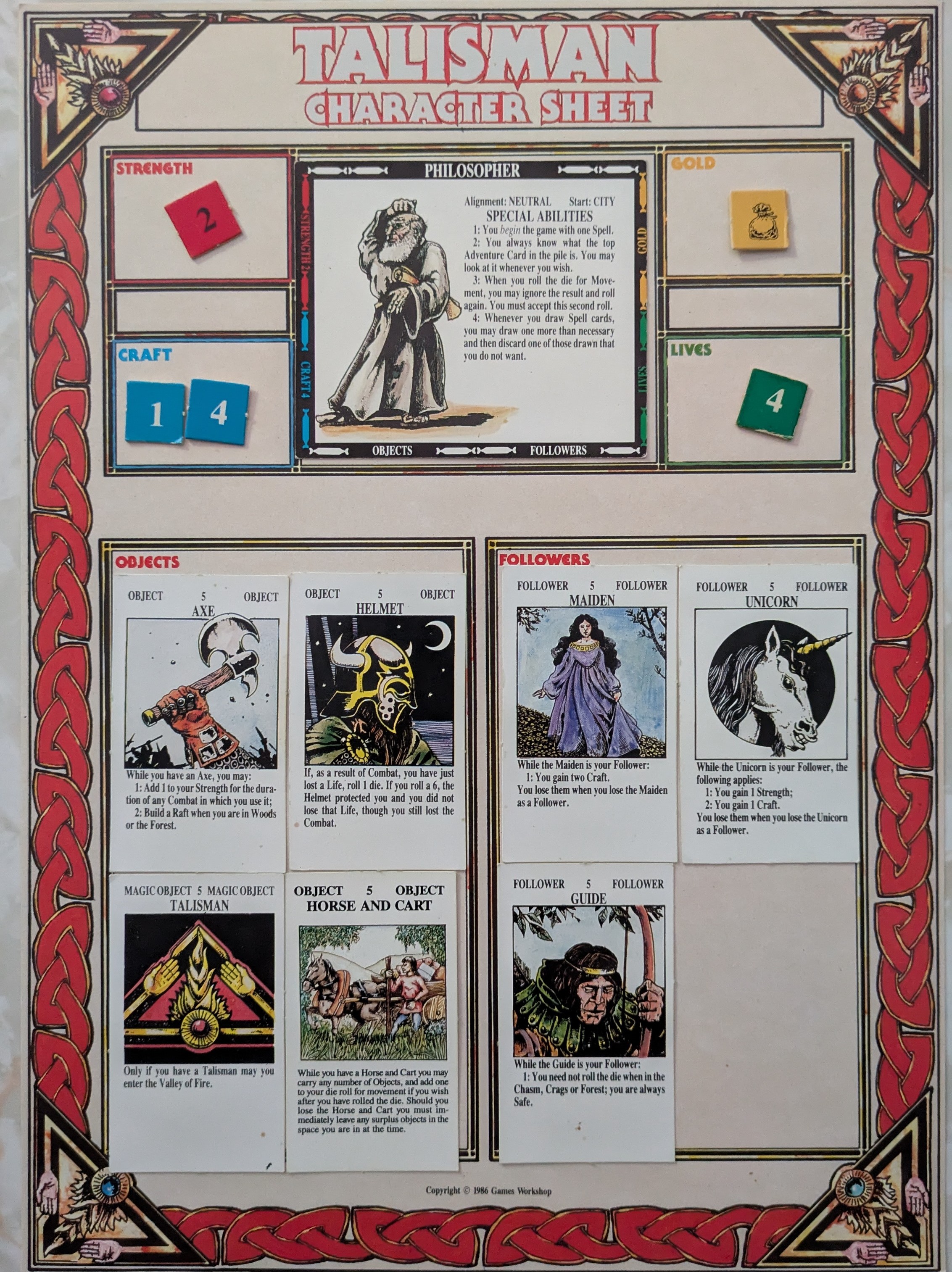
I used my Craft to pick the lock on the Portal of Power that had barred me from the Inner Region, and then with some luck I breezed through the Mines. When I hit the Vampire’s Tower, I read, “Roll 1 die to determine how many lives the Vampire takes from you.” The space was on the other side of the board, so I didn’t notice the additional text: “(The Vampire will accept Followers instead of Lives),” and then a table that showed the result of the die was halved, rounded up. So when I rolled a 3, I thought I lost 3 lives (whoops). I was still alive with one life, but was immediately mauled by the first of five Pitfiends I had to face in the Pits. If I would have realized I had only lost two lives, and could have traded my Guide for one of them, I could have conceivably taken on the Pitfiends, but it still would have been a series of battles that in aggregate were statistically not in my favor.
Zinni decided to make a run for the Crown of Command soon after, but he had discarded the Talisman he had robbed from me, so he couldn’t get to the Valley of Fire. Not thinking it through fully, I suggested he could take the Strength route of the Inner Region (I had taken the Craft route), and then circle around to the Pits, where all of my loot was. But I hadn’t considered that he would have to go through the Valley of Fire to get there, so he had to turn around right before the Valley (whoops). As he retreated back to the Middle Region, I didn’t realize he didn’t have to interact with the Inner Region spaces, so he almost got KO’d by Dice with Death on his way out (whoops). Zinni then made it back to the Castle and regained all of his life.
Meanwhile, Moss had hit his stride with the Priest, destroying all the face-up Spirits littering the Outer Region. A generous interpretation of the Priest’s ability, agreed-to by Zinni, meant he could keep all of those spirits as trophies, so he quickly leveled up his Craft.
Zinni then cast Teleport to the Warlock’s Cave, and was given a quest to destroy an Enemy to gain a Talisman. A Poltergeist attached to him meant he had to travel one space at a time. Traveling through the Deserts left him with 2 lives.
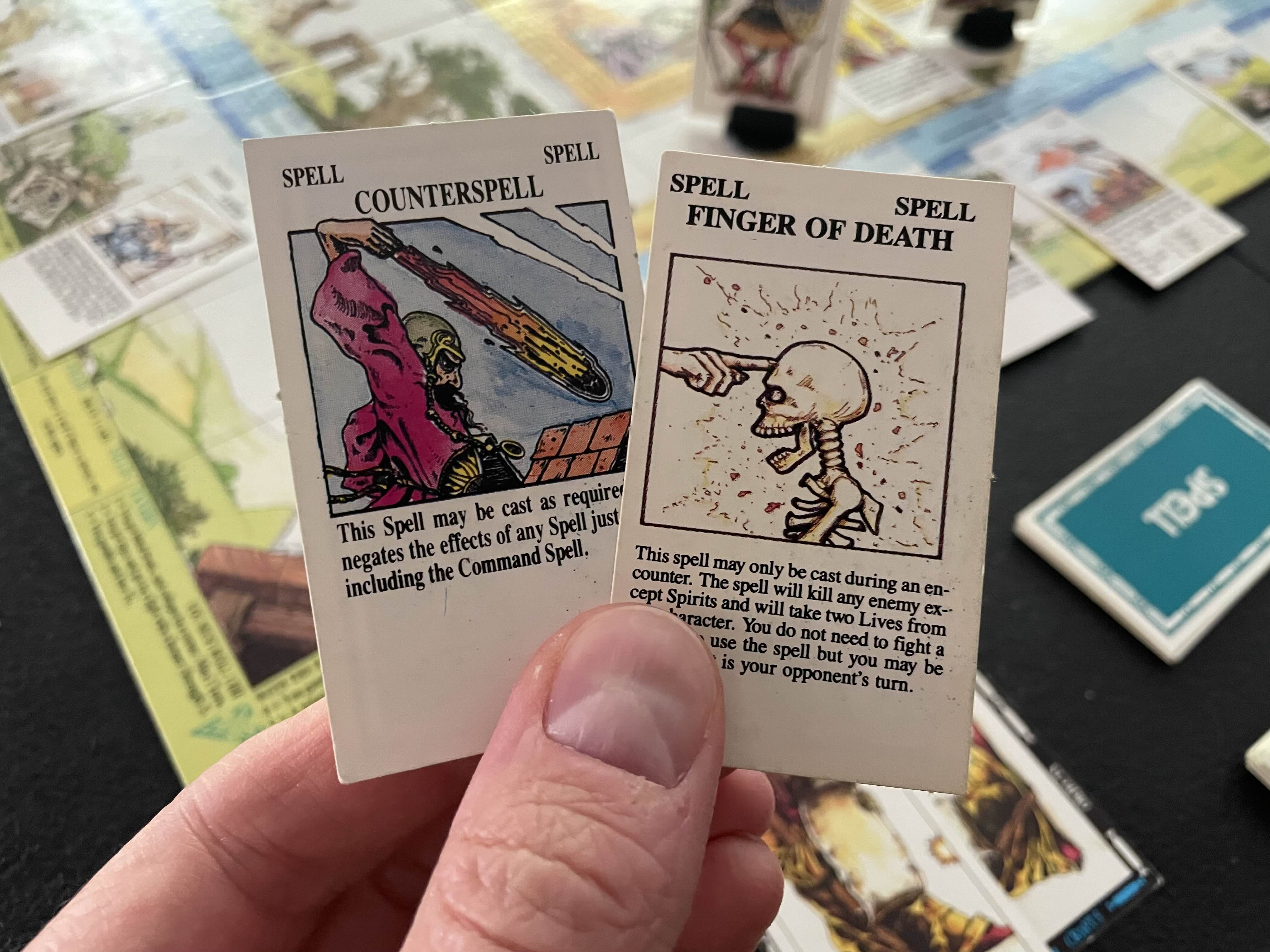
And then suddenly, the game was over. Moss, after grumbling the entire game about his bad RNG, met a Demigod who let him choose any one Spell from the deck. After reading through his options, he chose Finger of Death, which would destroy an Enemy or make a Player lose 2 lives. He cast it at Zinni and showed that he had a Counterspell in hand, as well. Zinni grabbed the card, read it, shrugged, and admitted defeat. What both of those knuckleheads failed to notice (and I only noticed during this writeup) was the first line of the card: “This spell may only be cast during an encounter.” Meaning that Moss had to be on the same space as Zinni to cast Finger of Death, which he definitely was not (whoops).
Moss, still beaming from his win, said the game was a ton of fun. Zinni and Houtman agreed that they had enjoyed it, as well.
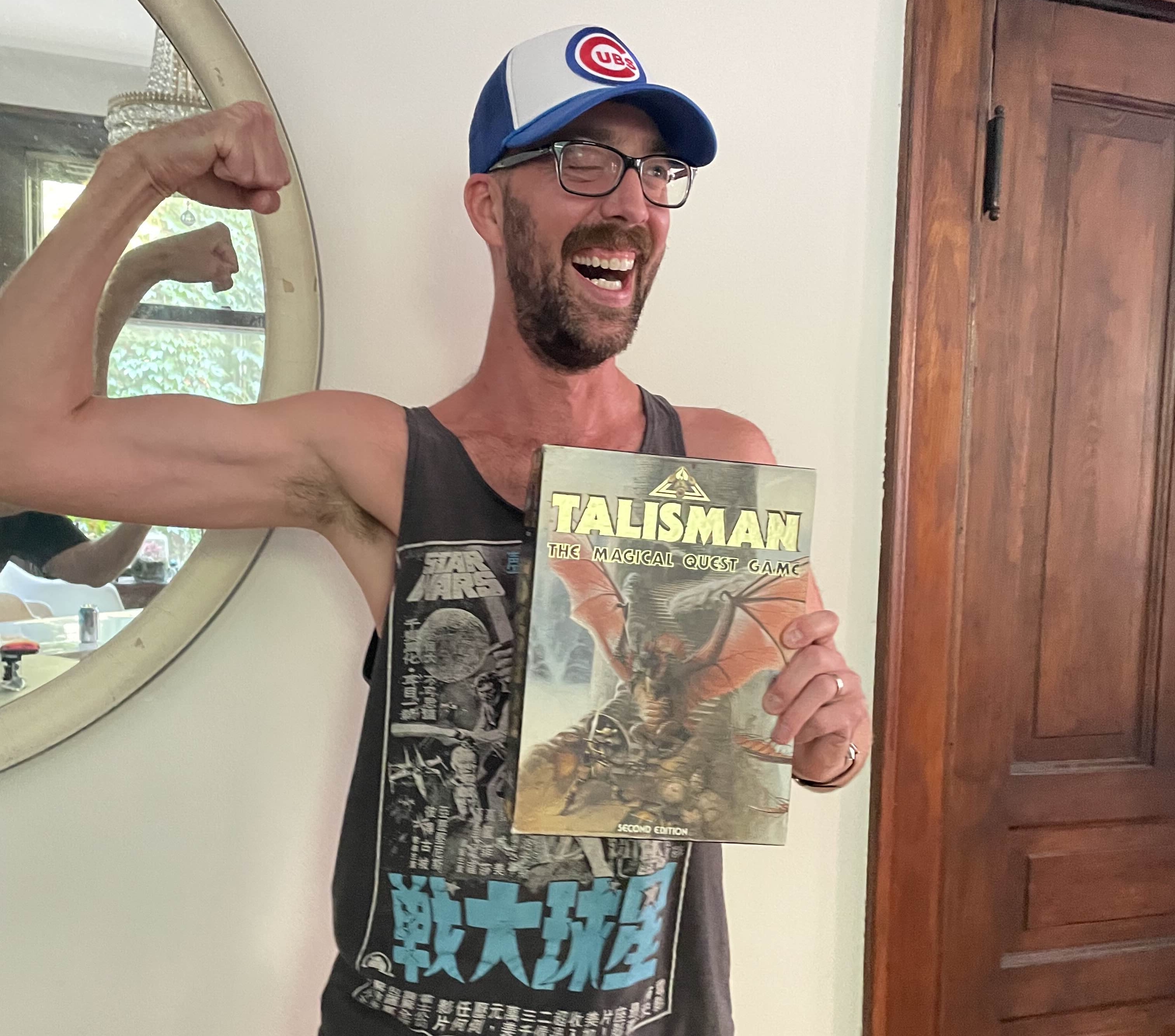
Despite not being as prepared for the rules of the Inner Region as I could have been, the game went smoothly enough. My Philosopher hadn’t won the day, but I still claimed victory on having successfully finished my first game of Talisman in my life. To many more!